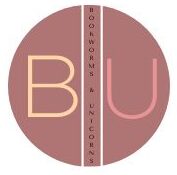Did you know there are several types of dyslexia? When we talk about dyslexia, it’s crucial to understand that it’s a learning difference that affects the ability to read, write, and process language. It’s not just a matter of jumbling up letters or seeing things backward, as the myths suggest. More than just recognizing the signs of dyslexia, it is important to know that there are several types.
Dyslexia can challenge someone’s academic journey, but it doesn’t impact intelligence or creative thinking. In fact, many individuals with dyslexia are highly creative and excel in various fields. That’s why it’s important to recognize dyslexia early and provide the right kind of support.
By acknowledging the diverse manifestations of dyslexia, we start to see the bigger picture. There’s not just one type of dyslexia; it presents itself in varied ways, each with its own set of characteristics and challenges. And that’s what you’re going to find out about as I take you through the different types, so you can better understand the dyslexic experience.
Decoding the Variants: The Spectrum of Dyslexia

Dyslexia is far more diverse than most people think. There isn’t just one kind of dyslexia; it’s a spectrum disorder with multiple faces. When it comes to understanding dyslexia, one-size-fits-all doesn’t apply, and here’s why.
Each variant of dyslexia comes with its own set of challenges. I hope to help you learn about the key subtypes that researchers and educators often discuss. These variations in dyslexia are crucial because they inform how educators and therapists tailor their teaching strategies to each student’s unique needs.
Dyslexia is about the distinct ways people’s brains process linguistic information. By recognizing these differences, we’re taking the first step towards creating learning environments that embrace and empower those with dyslexia, allowing them to navigate their educational journey with confidence.
Keep an open mind as we explore the subtypes of dyslexia. These subtypes will set the stage for a deeper understanding in the following sections, where we’ll delve into each type more specifically. Identifying dyslexia subtypes isn’t merely for academic categorization; it’s a pathway to comprehension, empathy, and effective intervention.
Exploring the Subtypes: Characteristics and Challenges
There is a diverse range of dyslexic experiences people have. Each subtype of dyslexia carries its own set of challenges and, interestingly, sometimes its unique strengths. I’ll walk you through the main types now.

Phonological Dyslexia is where we start. It’s a common subtype that’s all about difficulty in connecting sounds to symbols. Imagine you come across a word like ‘thought’. If you have phonological dyslexia, decoding that word based on the sounds of its letters can be really tough. This type taps into what we call ‘phonemic awareness‘ – basically, it’s the skill to hear and manipulate the individual sounds in words. People with this subtype often find rhyming and segmenting words a challenge.
Next up is Surface Dyslexia. Those with surface dyslexia might read ‘thought’ just fine but stumble on irregular words like ‘isle’ or ‘debt’. It’s kind of like their brains prefer the scenic route of sounding out each letter, rather than taking the highway of whole-word recognition. This means automaticity in reading – the fluency that allows you to read quickly and effortlessly – often takes a hit.

But it’s not just about sounds. Visual Dyslexia throws another curveball. For some, the letters on the page might seem to dance around or blur together. It brings up issues with visual discrimination and can lead to reversing letters or confusing similar-looking ones, like ‘b’ and ‘d’. This isn’t just about not seeing clearly; it’s about how the brain processes visual information.
Now, what about when you see something familiar, like a red stop sign? You’d likely name it instantly. But in Rapid Naming Deficit Dyslexia, that quick recall is disrupted. Colors, numbers, even simple pictures – they can all become time-consuming to name, which, you guessed it, impacts reading fluency and speed.
Lastly, we’ve got the Mixed Dyslexia cocktail. This is where individuals have a blend of symptoms from different subtypes. It’s like having a foot in two worlds, which can be particularly challenging when trying to pinpoint strategies that work best for them.
Embracing Complexity: Overlapping Symptoms and Co-occurrence
If you’ve been following along, you’re now aware that dyslexia isn’t a straightforward condition. It’s a complex array of subtypes, each with its individual quirks and challenges. But here’s where it gets even more intricate. Individuals with dyslexia might experience overlapping symptoms from different types, and this blend can make diagnosis and intervention more nuanced.

But that’s not all. Dyslexia can walk hand-in-hand with other learning differences, such as dysgraphia or ADHD, creating a unique profile for each person. This is why standardized solutions often fall short. Tailoring support to each individual’s specific needs is critical for effective learning and development.
I hope that this journey through the types of dyslexia has been enlightening. Remember, recognizing the unique experiences of those with dyslexia paves the way for empathy, accurate diagnosis, and most importantly, the right assistance. Professionals in the field work tirelessly to ensure that each person with dyslexia can reach their full potential, and this often starts with understanding the true diversity of this learning difference.
So, if you or someone you know is navigating the world of dyslexia, don’t hesitate to seek out comprehensive evaluations and customized education plans. There’s a wealth of resources and strategies designed to make the most of everyone’s unique learning style. After all, embracing the full spectrum of dyslexia is the first step to unlocking the incredible potential that lies within each individual.
Feel free to share your thoughts and comments below.
Dee_J.

